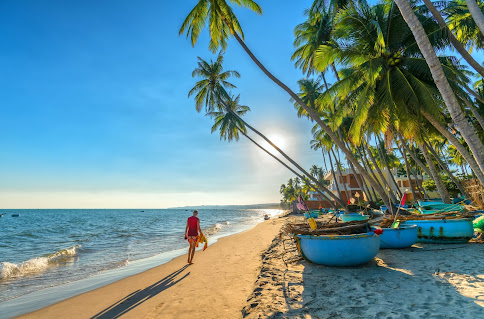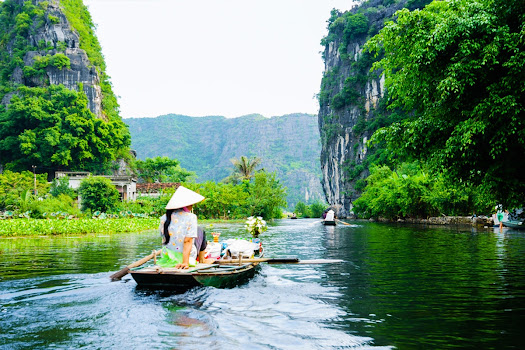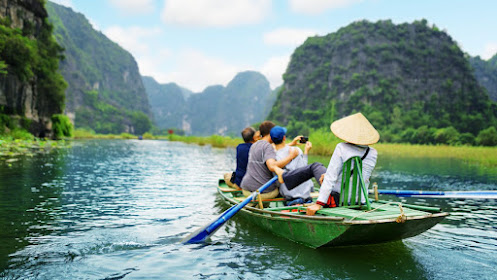When Is the Best Time to Visit Vietnam?
Vietnam, a land of captivating contrasts, beckons travellers with its rich cultural tapestry, breathtaking landscapes, and culinary scene that tantalises the taste buds. As this Southeast Asian gem gains prominence as a sought-after travel destination, the importance of orchestrating an unforgettable Vietnam adventure becomes paramount.
To truly unlock the full potential of your Vietnam Travel, an insightful grasp of the diverse weather patterns across the nation is indispensable.
Join us in this comprehensive guide as we navigate the intricacies of Vietnam's climate, providing invaluable insights into the optimal timing and ideal destinations for a truly enriching and immersive travel experience.
Understanding Vietnam's Weather Patterns
Vietnam's weather varies significantly from north to south, creating a mosaic of climates that cater to different preferences. It's crucial to understand each region's distinct weather patterns to plan your itinerary effectively.
North Vietnam (May to October)
In North Vietnam, the weather undergoes distinct changes throughout the year. From May to October, the Vietnam travel locations experiences hot and humid conditions, making it ideal for those who enjoy warmer climates. This period is perfect for exploring the vibrant city of Hanoi and the mesmerising Ha Long Bay. Be prepared for occasional rainfall during these months, adding a refreshing touch to the atmosphere.
South Vietnam (Year-Round)
The southern part of Vietnam enjoys a more consistent climate year-round. With stable temperatures and a tropical climate, South Vietnam is a destination that can be explored at any time. Whether you're wandering through the bustling streets of Ho Chi Minh City or cruising along the Mekong Delta, the weather is generally favourable, providing a great backdrop for your adventures.
Central Vietnam (February to August)
Central Vietnam travel experiences a unique climate characterised by a hot and dry season from February to August. The region is perfect for exploring historical gems like Hue and the charming town of Hoi An during these months. However, it's essential to note the increased rainfall in October and November, which can influence travel plans.
Highlands and Inland Mountainous Areas
The highlands and inland mountainous areas, such as Dalat and Sapa, boast a distinct climate. The best time to embark on trekking adventures in these regions is from October to March. During these months, the weather is more favourable for outdoor activities, offering breathtaking views and a chance to connect with Vietnam's natural beauty.
Coastal Areas and Beach Destinations
If you're a beach enthusiast, the Central Coast is calling. The peak season for coastal areas, including Nha Trang and Da Nang, is from February to June. During this time, the weather is perfect for basking in the sun, enjoying water sports, and exploring the pristine beaches Vietnam offers.
Other Factors to Consider
While understanding Vietnam's weather patterns is crucial, other factors significantly determine the best time to visit. Let's explore some additional considerations that can enhance your travel experience.
Impact of Activities and Festivals
The activities you have in mind for your Vietnam travel can greatly influence the optimal time to visit. For instance, trekking enthusiasts might find the cool, dry months from October to March ideal for exploring the highlands. Additionally, cultural festivals like the Tet Lunar New Year can add a unique and vibrant dimension to your travel experience, influencing your choice of travel dates.
Dealing with Typhoon Season Challenges (August to November)
Vietnam experiences a typhoon season from August to November, primarily affecting coastal areas. Travelers should exercise caution and stay informed about weather forecasts during this period. While it's not impossible to visit during the typhoon season, being prepared and flexible with your plans is crucial, especially if you're exploring coastal regions.
Conclusion
In conclusion, choosing the best time to travel to Vietnam involves a delicate balance of understanding the country's weather patterns, considering personal preferences, and factoring in the impact of festivals and activities. Each region offers a unique experience, and by tailoring your travel dates to match your interests, you can unlock the full potential of this captivating destination. Whether you're exploring the ancient wonders of Hoi An, cruising through the Mekong Delta, or trekking in the highlands, Vietnam has something magical to offer year-round. So, plan wisely, embrace the diversity of Vietnam travel, and embark on a journey that will leave you with lasting memories.




Comments
Post a Comment